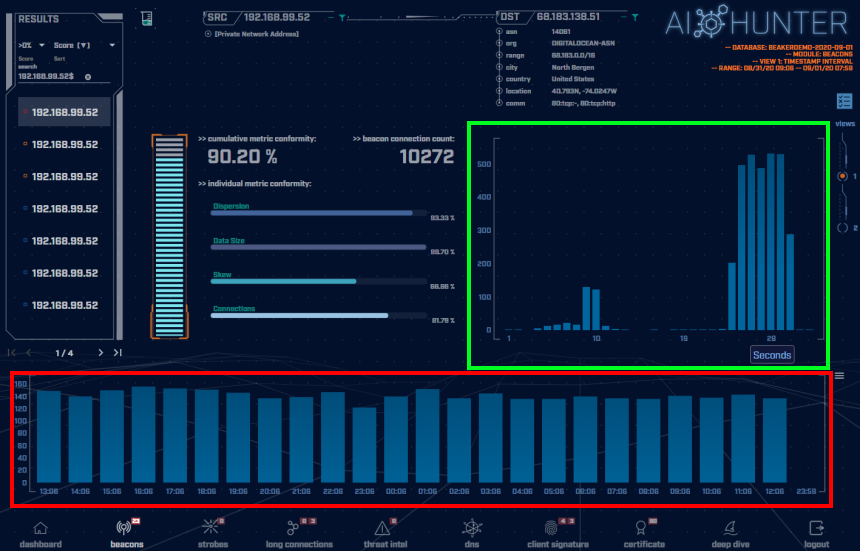

- DETECTING COBALT STRIKE BEACON TRAFFIC HOW TO
- DETECTING COBALT STRIKE BEACON TRAFFIC CRACKED
- DETECTING COBALT STRIKE BEACON TRAFFIC SOFTWARE
(Disclaimer: this article is heavily inspired from the videos available here and the official documentation.)Ĭobalt Strike is a software for Adversary Simulations and Red Team Operations that addresses all evasion techniques highlighted on the below diagram:

DETECTING COBALT STRIKE BEACON TRAFFIC HOW TO
In upcoming blog posts, we will show in detail how to use these private keys to decrypt metadata and decrypt C2 traffic.ĭidier Stevens is a malware expert working for NVISO. This can then be used to decrypt the metadata, and the C2 traffic (more on this later). Figure 3: using option verbose to display the private key Using option verbose, the private key is also displayed.

Whenever a public key is extracted with known private key, the tool highlights this: Figure 2: 1768.py extracting configuration from beaconĪt minimum, this information is further confirmation that the sample came from a rogue Cobalt Strike server (and not a red team server). This key information is now included in tool 1768.py, a tool developed by Didier Stevens to extract configurations of Cobalt Strike beacons. Out of these 10 packages, we extracted 6 unique RSA key pairs.Ģ of these pairs are prevalent on the Internet: 25% of the Cobalt Strike servers we fingerprinted (1500+) use one of these 2 key pairs.
DETECTING COBALT STRIKE BEACON TRAFFIC CRACKED
Searching through VirusTotal, we found 10 cracked Cobalt Strike packages: ZIP files containing a file named.
cobaltstrike.beacon_keys? This file is not part of a legitimate Cobalt Strike package, as it is generated at first time use. One possible explanation we verified: are there cracked versions of Cobalt Strike, used by malicious actors, that include a. This implies that they use the same private key, thus that their. These keys are generated when the Cobalt Strike team server software is used for the first time.ĭuring our fingerprinting of Internet facing Cobalt Strike servers, we found public keys that are used by many different servers. Public and private keys are stored in file. RSA encryption is used to encrypt this metadata: the beacon has the public key of the C2, and the C2 has the private key. The AES key is generated by the beacon, and communicated to the C2 using an encrypted metadata blob (a cookie, by default). The communication between a Cobalt Strike beacon (client) and a Cobalt Strike team server (C2) is encrypted with AES (even when it takes place over HTTPS). We found 6 private keys for rogue Cobalt Strike software, enabling C2 network traffic decryption.


 0 kommentar(er)
0 kommentar(er)
